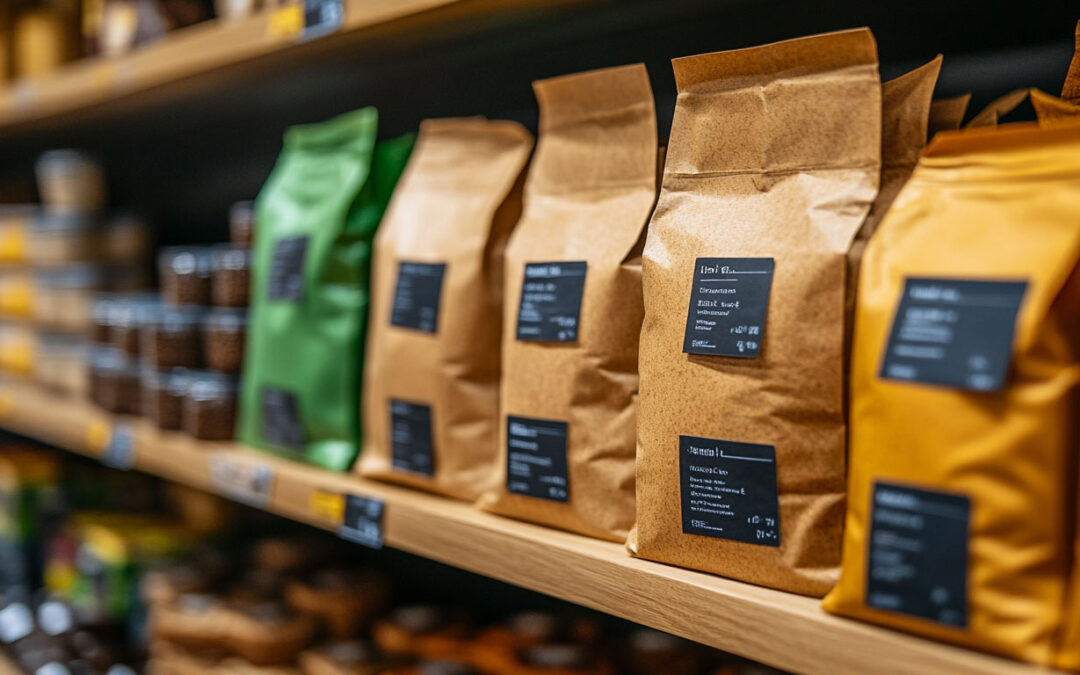What Needs to Be on a Coffee Bag? Labeling Requirements and Best Practices
If you’re in the coffee business, labeling your coffee bags correctly is a must. Whether you’re a small-batch roaster or a large coffee producer, your packaging needs to meet specific legal requirements while also informing customers about what they’re buying.
Certain details—like weight, origin, and roaster information—are legally required. Others, like tasting notes and brew recommendations, can enhance the customer experience. Below, we’ll break down the must-haves and the extras that can help your brand stand out.
Mandatory Information for Coffee Packaging
To legally sell coffee, you need to include certain key details on your packaging. These requirements may vary slightly by country, but in general, here’s what needs to be on every coffee bag:
1. Net Weight
- Must be displayed in both ounces and grams (e.g., 12 oz / 340 g).
- Helps customers understand the amount of coffee they’re purchasing.
- Should be printed on the front panel of the bag.
2. Name of the Product
- Clearly state what’s inside the bag: whole bean coffee, ground coffee, espresso blend, etc.
- If flavored, specify the flavor (e.g., “Vanilla Hazelnut Coffee”).
3. Roaster or Distributor Information
- The name and address of the company that roasted or distributed the coffee.
- Must be legible and easy to find on the packaging.
- Some regulations require a phone number or website.
4. Country of Origin
- If your coffee is a single-origin variety, list where it was grown (e.g., Ethiopia, Colombia, Brazil).
- For blends, you’re not required to list each origin, but transparency is appreciated by consumers.
5. Roast Date or Best-By Date
- Freshness is crucial in coffee sales, so many countries require either a roast date or an expiration/best-by date.
- Helps customers gauge how fresh their coffee is.
6. Ingredient List (If Applicable)
- If it’s just coffee, labeling ingredients isn’t required.
- If additives (like flavoring or sweeteners) are included, they must be listed.
7. Certifications (If Claimed)
- If you label your coffee as organic, Fair Trade, Rainforest Alliance Certified, or similar, you must display the appropriate certification logo.
- It’s illegal to claim certifications without proper authorization.
Optional But Recommended Labeling Elements
While not legally required, including these details can enhance customer trust and make your coffee more appealing:
1. Tasting Notes
- Descriptive flavor profiles (e.g., “notes of dark chocolate and citrus”) help customers choose a coffee they’ll love.
2. Elevation of Coffee Growth
- Specialty coffee drinkers often appreciate knowing the altitude where their beans were grown.
- Higher elevations usually mean denser, more flavorful beans.
3. Brew Recommendations
- Suggested grind size and brewing methods (e.g., “best for French press” or “ideal for espresso”).
- Helps customers get the best experience from your coffee.
4. QR Codes or Website Links
- A QR code that leads to a webpage with more details about sourcing, sustainability, and farmer stories can add value.
5. Cupping Score
- If your coffee has been scored by the Specialty Coffee Association (SCA), displaying the rating (e.g., 88 points) can signal quality.
6. Eco-Friendly Packaging Info
- Indicate if your coffee bag is compostable, recyclable, or made with sustainable materials.

Final Thoughts: Label Smart, Sell Better
A well-labeled coffee bag does more than meet legal requirements—it builds trust and improves the customer experience. By including both essential details and optional extras that add value, your packaging can stand out on the shelf and keep customers coming back.
Whether you’re launching a new coffee brand or refining your packaging, make sure you’re meeting legal standards while also creating an informative and appealing design. The right labels can make all the difference in building a loyal coffee-loving customer base.

